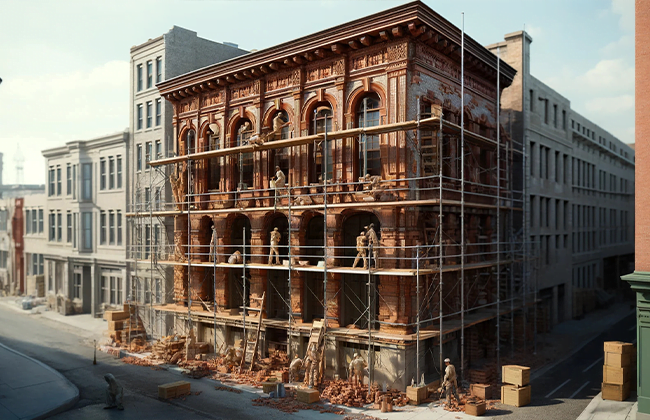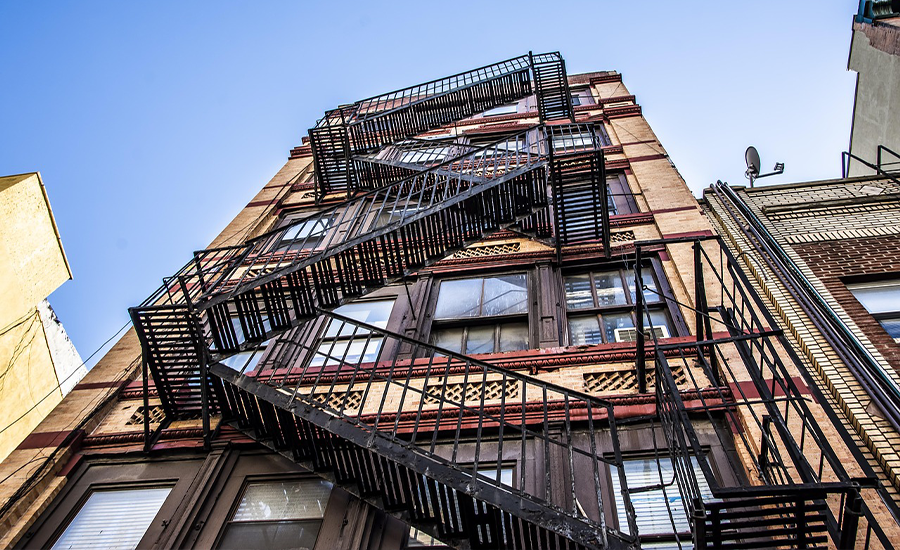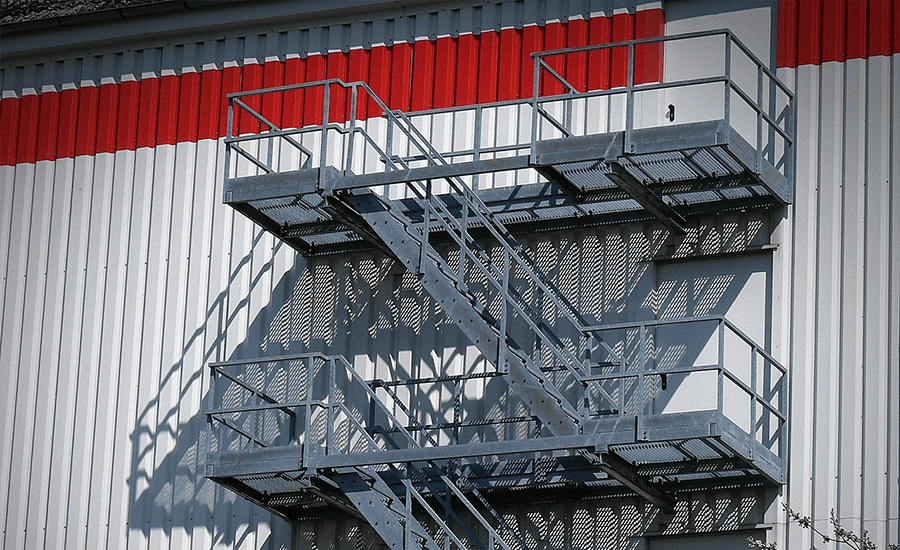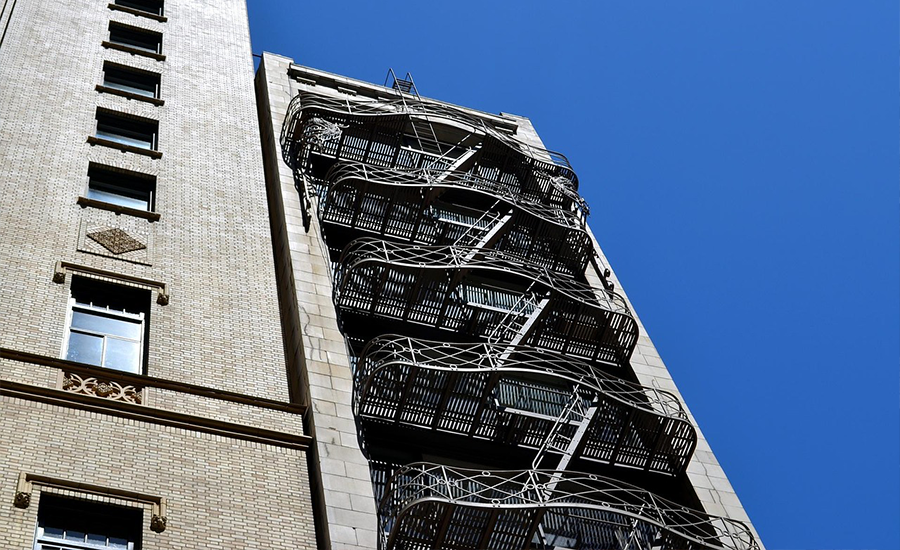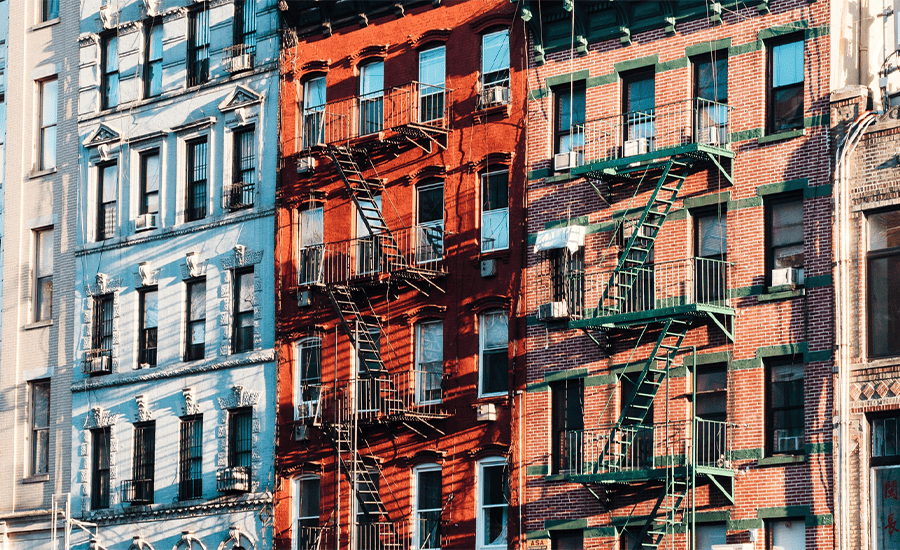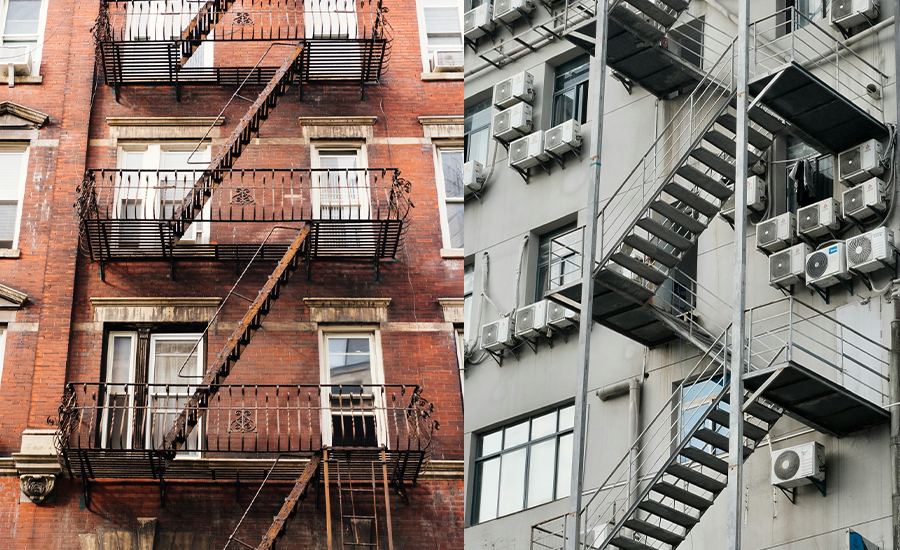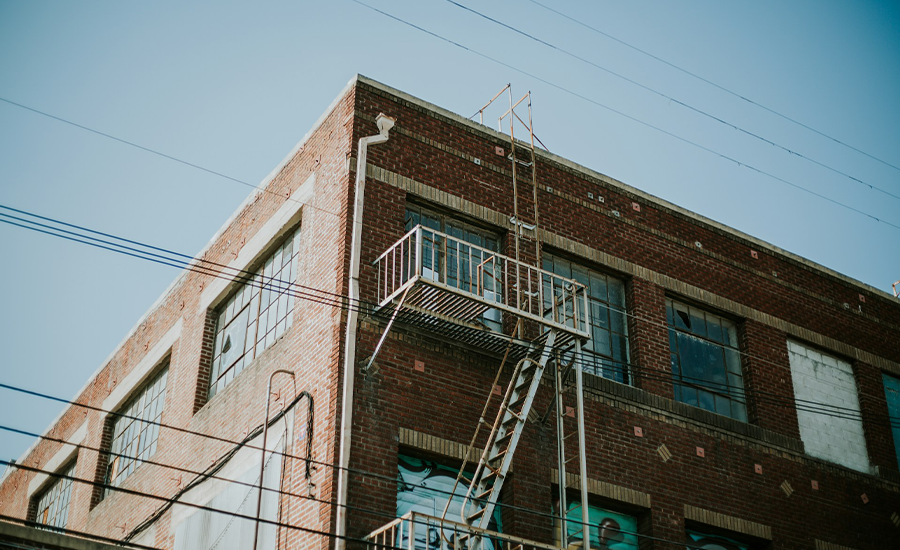Brick facade restorations is crucial for maintaining the aesthetic and structural integrity of any building. This practice not only helps in preserving historical architecture but also ensures that the building remains safe and visually appealing. Engaging in regular brick facade restoration can prevent more extensive damage that might require costly repairs, making it a wise investment for property owners looking to protect and enhance their asset’s value.
Understanding Brick Facade Restoration
Brick facades undergo restoration primarily due to weathering, pollution, and natural aging. These external factors can cause mortar erosion, brick cracking, and aesthetic degradation, compromising both the beauty and structural integrity of a building. Restoring a brick facade involves a careful evaluation of the extent of damage, followed by the selection of suitable materials and techniques that align with the original construction’s quality and style.
To begin with, experts assess the facade for damage, which may include discoloration, loose bricks, or water infiltration. Once they understand the scope of deterioration, they choose materials that will not only restore the facade but also protect it against future damage. Techniques such as repointing, where old mortar is removed and replaced with new mortar, are crucial for maintaining the longevity and historical accuracy of the facade.
The Importance of Brick Facade Restoration
Restoring a brick facade is vital, not just for enhancing a building’s appearance, but also for safeguarding its structural integrity. When you restore the facade, you’re also boosting the building’s resistance against environmental stresses like rain, wind, and pollutants. Moreover, a well-maintained facade contributes to energy efficiency. By sealing cracks and repairing damages, you minimize air infiltration, which can significantly reduce heating and cooling costs. This restoration can also significantly elevate the property’s market value, making it a wise investment for property owners. Through restoration, a building retains its charm and historical relevance, which is particularly crucial for heritage properties.
Common Problems with Brick Facades
In brick facades, several common issues can signal the need for restoration. Efflorescence, a white powdery residue on bricks, occurs when water seeping through the wall evaporates and leaves behind salt deposits. Spalling, another frequent problem, happens when water enters the brick, freezes, and causes the surface to peel, pop out, or flake off. This not only affects the facade’s appearance but also its structural stability. Structural cracks are also a critical concern; they may indicate foundational or deeper structural issues that require immediate attention. Ignoring these signs can lead to more severe problems, escalating repair costs, and potentially hazardous situations. Regular maintenance and prompt restoration work are essential to prevent long-term damage and maintain the facade’s aesthetic and structural integrity.

Planning Your Brick Facade Restoration
Planning is the foundation of any successful brick facade restorations project. It starts with a detailed assessment of the building to understand the extent of damage and the restoration needed. This assessment should cover both the visible issues and potential hidden problems within the bricks and mortar. Understanding the historical significance of the building also plays a critical role in planning; it ensures that the restoration efforts maintain the architectural integrity and respect the original design and materials.
Acquiring the necessary permits is another crucial step. Depending on the location, restoring a historic building can require specific permissions from local heritage and building authorities to ensure that all modifications are in line with regulatory standards.
Table: Key Planning Steps for Brick Facade Restoration
| Step | Description |
| Assessment | Conduct a thorough examination of the facade to identify all damage and issues. |
| Historical Analysis | Research the building’s history to ensure accuracy in restoration to its original state. |
| Permit Acquisition | Obtain all necessary local and state permits required for restoration work. |
| Project Timeline | Develop a timeline for the restoration process, considering weather conditions and contractor availability. |
| Budget Planning | Outline a budget that covers all necessary materials, labor, and unexpected expenses. |
Choosing the Right Materials and Techniques
Selecting appropriate materials is crucial for ensuring the durability and aesthetic continuity of the facade. The mortar and bricks used should match the building’s original materials as closely as possible. This compatibility is vital not only for the structure’s appearance but also for its physical integrity; mismatched materials can lead to faster deterioration and future complications.
Repointing is one of the primary techniques used in brick restoration. It involves removing deteriorated mortar from the joints and replacing it with new mortar that matches the original in color, composition, and strength. Cleaning the bricks is also essential; however, it must be done delicately to avoid damaging the brick’s surface. Techniques like gentle power washing or chemical treatments can be used depending on the brick’s condition and type.
Sealing the facade after repairs is another critical step. It protects the restored brickwork from moisture and environmental damages, prolonging the life of the facade and reducing future maintenance needs.
Each technique requires precise execution to ensure that the restoration enhances the facade’s longevity and preserves its historical value. By carefully choosing materials and employing proven restoration techniques, property owners can significantly extend the life of their buildings while maintaining their aesthetic appeal and structural integrity.
Step-by-Step Guide to Brick Facade Restoration
A meticulous, step-by-step approach to brick facade restorations ensures that every phase of the process is executed with precision and attention to detail, from the initial inspection to the final touches. This methodical progression not only enhances the effectiveness of the restoration but also helps in maintaining the historical authenticity and structural integrity of the building.
Table: Step-by-Step Brick Facade Restorations Process
| Step | Description |
| 1. Inspection and Assessment | Conduct a comprehensive inspection to identify all damage and deterioration. |
| 2. Cleaning | Clean the facade using methods suited to the brick and mortar condition without causing damage. |
| 3. Repointing | Remove old mortar and replace it with new mortar that matches the original in look and composition. |
| 4. Repairing Bricks | Replace or repair damaged bricks to restore structural stability and aesthetic appeal. |
| 5. Sealing | Apply a protective sealant to shield the facade from moisture and environmental elements. |
| 6. Final Inspection | Perform a detailed inspection to ensure all restoration work meets quality standards. |
Inspection and Assessment
The initial step in brick facade restorations is conducting a thorough inspection and assessment. This process involves examining the facade in detail to determine the extent of damage and the specific restoration needs. You’ll want to look for signs of mortar erosion, brick cracking, efflorescence, and any other structural anomalies. It’s also important to assess the impact of environmental conditions on the facade to plan the restoration accordingly.
During the inspection, take detailed notes and photographs to document the condition of the facade. These records will be invaluable in planning the restoration process and in any future maintenance. Utilizing tools like moisture meters and thermal imaging can also help in identifying less obvious problems like internal moisture accumulation, which can cause long-term damage if not addressed.
Cleaning and Repair
Cleaning the facade is a critical next step, requiring careful selection of methods that effectively remove dirt and build-up without damaging the bricks or mortar. Techniques can vary from gentle brushing and washing with diluted cleaning solutions to more advanced methods like low-pressure water spraying or chemical treatments, depending on the severity of the dirt and the condition of the bricks.
Repairing the bricks involves either replacing severely damaged bricks or repairing them if the damage is minimal. It’s essential to match the new or repaired bricks as closely as possible with the original in terms of color, texture, and material to maintain the facade’s aesthetic continuity. For cracks and small breaks, a process called ‘pointing‘ or ‘repointing‘ is used, where new mortar is carefully pushed into gaps where the old mortar has deteriorated.

Preventative Measures and Maintenance
Preventative maintenance is crucial for extending the life of a brick facade and avoiding extensive and costly repairs in the future. Regular maintenance practices not only preserve the building’s aesthetic appeal but also reinforce its structural integrity. Here’s a closer look at the key preventative measures and maintenance practices you should consider to keep your brick facade in top condition.
Table: Preventative Maintenance Schedule for Brick Facade
| Frequency | Task | Purpose |
| Bi-annual | Visual Inspection | Identify potential issues early, such as small cracks or loose bricks. |
| Annual | Cleaning | Remove dirt, debris, and potential growths that can damage brick and mortar over time. |
| Every 5 years | Repointing | Replace deteriorated mortar to prevent water infiltration and structural damage. |
| As needed | Sealing | Apply or reapply sealant to protect against moisture and weather conditions. |
Regular Inspections
Conducting regular inspections is the cornerstone of preventative maintenance. At least twice a year, a thorough visual examination of the facade should be carried out to spot any signs of wear and tear. Look for cracks, efflorescence, spalling, and any signs of moisture damage. Early detection of these issues allows for timely interventions, which can significantly reduce the scope and cost of repairs.
Cleaning
Keeping the facade clean is not just about aesthetics; it also protects the material integrity. Annually cleaning the brickwork helps prevent the buildup of harmful substances that can erode mortar and brick over time. Use gentle methods such as soft washing or low-pressure water spraying to avoid damaging the bricks. Avoid harsh chemicals unless absolutely necessary and always follow up with a thorough rinsing to prevent residue build-up.
Repointing and Repair
Repointing should be done approximately every five years or as needed, based on the condition of the mortar. This involves removing old, crumbling mortar and replacing it with fresh mortar that matches the original in terms of color, composition, and texture. Additionally, any damaged or broken bricks should be replaced or repaired promptly to maintain the structural stability of the facade.
Sealing
Applying a sealant to the facade can provide an extra layer of protection against moisture and environmental elements. The sealing process should be performed as required, based on the existing condition of the sealant and the level of exposure to harsh weather conditions. Ensure that the selected sealant is appropriate for the type of brick and mortar used in your building, as some sealants can trap moisture inside, leading to further damage.
By adhering to these maintenance practices, you can significantly prolong the life of your brick facade, reduce future restoration needs, and maintain the building’s value and safety. Regular upkeep not only saves money in the long run but also ensures that the facade continues to protect and enhance the building effectively.
Legal Considerations and Compliance

When planning a brick facade restorations, it’s crucial to consider the legal aspects and ensure full compliance with local building codes and standards. This not only ensures the safety and legality of the restoration project but also helps in preserving the building’s value and preventing potential legal issues.
Understanding Local Building Codes
Local building codes are designed to ensure that construction and restoration practices meet safety standards and are in alignment with local regulations. These codes typically cover aspects such as the materials you can use, the methods of restoration, and the safety measures you must follow during the construction process. For example, certain areas might require you to perform restoration work on historic buildings in a manner that preserves their original appearance and structural integrity.
Obtaining Necessary Permits
Before beginning any facade restoration work, it’s essential to obtain the necessary permits from the local government. The permitting process usually requires you to submit detailed plans of the proposed work, which may need to include information on the materials and methods you will use. This step is crucial as it ensures that the restoration project complies with local zoning laws, building codes, and historical preservation ordinances.
Compliance with Historic Preservation Standards
If the building is designated as a historic structure, additional regulations may apply. Historic preservation standards are designed to protect the architectural integrity of historically significant buildings. Compliance with these standards often requires the use of specific materials and techniques that match the original construction as closely as possible. It might also limit the extent to which the appearance of the building can be altered.
Navigating Legal Requirements
Navigating these legal requirements often requires consultation with experts in building codes, historical preservation, and legal advisors specialized in real estate and construction law. These professionals can provide guidance on the specific requirements and processes for your locality, helping to streamline the approval process and avoid potential legal pitfalls.

Cost Considerations
When planning a brick facade restoration, understanding and managing the costs involved are critical. These expenses can vary widely depending on the scope of the project, the materials selected, and whether you choose to hire professionals or undertake some of the work yourself.
Estimating Costs
The first step in budgeting for a facade restoration is to get a clear understanding of the extent of the needed repairs. This might involve hiring a consultant to assess the facade and identify all necessary work. Costs can include everything from materials like bricks and mortar to labor and even the potential need for specialized equipment. Additionally, if the building is historic, further costs may arise from the need to use specific restoration techniques or materials compliant with historical preservation standards.
Budgeting Tips
To effectively manage the finances of a restoration project, it’s advisable to:
- Get Multiple Quotes: Obtain detailed quotes from several contractors to compare prices and services.
- Set Aside a Contingency Fund: Unexpected issues often arise during restoration projects. Setting aside around 10-20% of the total budget for unforeseen expenses can help manage these surprises without derailing the financial plan.
- Prioritize Tasks: If budget constraints are tight, prioritize essential repairs that impact structural integrity or are likely to worsen if left unaddressed.
DIY vs. Professional Restoration
Deciding between DIY and hiring professionals for brick facade restorations involves weighing several factors:
DIY Restoration
- Pros:
- Cost Savings: Handling the restoration yourself can significantly reduce costs, especially in labor.
- Flexibility: Working on your own timeline and making decisions about materials and processes firsthand.
- Cons:
- Time-Consuming: DIY projects can take much longer, especially if you lack experience.
- Potential for Mistakes: Without specialized knowledge, there’s a higher risk of errors that could lead to further damage or necessitate rework.
Hiring Professionals
- Pros:
- Expertise: Professionals bring experience and specialized skills, which can ensure the restoration is done correctly and efficiently.
- Quality Guarantee: Many professional services offer warranties or guarantees on their work, providing peace of mind.
- Cons:
- Higher Cost: Professional services can be costly, particularly if the project is extensive or involves complex challenges.
- Less Control: While professionals handle the work, you might have less say in day-to-day decisions compared to a DIY project.
Conclusion
Maintaining your building through regular brick facade restorations ensures it remains structurally sound and aesthetically pleasing. If you’re seeking a professional contractor for your brick facade restoration needs, feel free to reach out to us at (+1) 917-355-8556 for expert assistance and services that you can rely on to bring your façade back to its original glory.
FAQs
Q: What does brick facade restoration involve?
A: Brick facade restorations typically involve assessing the existing condition of the facade, cleaning the bricks, and repairing or replacing damaged bricks. Often, repointing the mortar restores structural integrity and appearance.
Q: How often should brick facade restoration be performed?
A: The frequency of brick facade restoration can vary. However, experts generally recommend inspecting your facade every 5 to 10 years to determine if any restoration work is necessary.
Q: What are the benefits of professional brick facade restoration?
A: Professional brick facade restoration provides expert care and precision. It ensures that the restoration is durable and aesthetically aligns with the building’s original architecture.
Q: Can DIY methods be effective for brick facade restoration?
A: While DIY methods for brick facade restorations can be tempting, professional expertise is crucial. It helps address more complex issues like structural damage and historical preservation accurately.
Q: What are common signs that brick facade restoration is needed?
A: Common signs include visible cracks in the mortar and spalling bricks. Moisture issues could lead to more severe damage if not promptly addressed.


